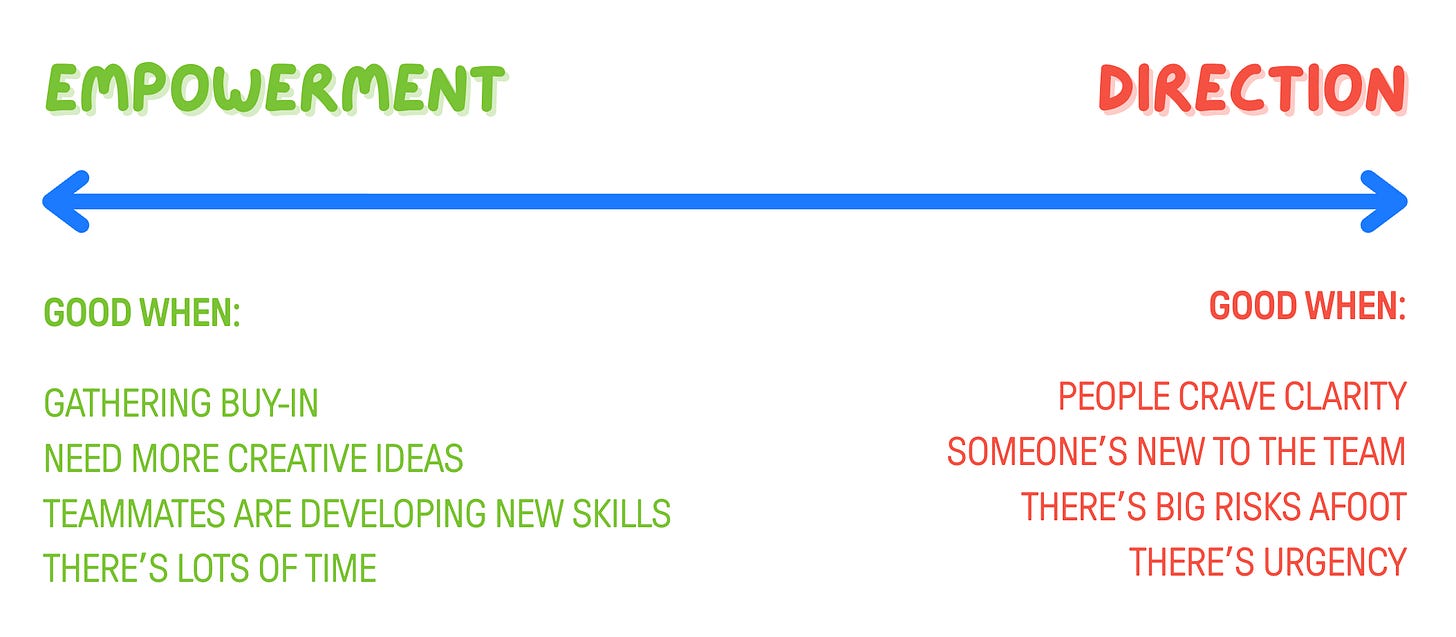Hey, Luca here, welcome to a weekly edition of the💡 Monday Ideas 💡 from Refactoring! To access all our articles, library, and community, subscribe to the full version:
Resources: 🏛️ Library • 💬 Community • 🎙️ Podcast • ❓ About
1) 📑 The #1 productivity problem is missing context
This idea is brought to you by today’s sponsor, Unblocked!
Every year, new AI tools promise to make developers more productive. But the biggest blocker to shipping software isn’t writing code — it’s finding the context to make decisions.
🔎 Developers lose 8+ hours per week hunting through Slack, Jira, and Confluence
⏳ 65% of developer time is wasted when context is scattered
🙋♂️ Senior engineers get pinged 10+ times a week for answers they’ve already given
🚀 New hires take 6+ months to become fully productive
Unblocked turns scattered knowledge from GitHub, Slack, Jira, and Confluence into clear answers your team can trust. The result: faster onboarding, fewer interruptions, and autonomous teams that stay focused.
2) ⚖️ Empowerment vs Direction
In June I attended the LDX3 conference in London.
My favorite talk of the event was delivered by Lara Hogan, who went through what feels like different eras of engineering management over the last 20+ years, through the lens of a single, crucial tradeoff: empowerment vs direction.
As managers, we often tend to stick to the same playbook: the one we are the most comfortable with. Some of us like being more directive, while others (like myself) are more at ease when they can leave ample room for people to explore and develop.
Whatever strategy we like the most, there always come times where that strategy becomes ineffective. Sometimes it’s about the type of project, or the team, or a teammate we want to get the most out of.
Good managers should get comfortable with both ends of the spectrum, and the spots in between.
You can find all my favorite ideas from LDX3 below 👇 and Lara’s slides here.
2) 🔥 Good job descriptions drive excitement
Earlier this year I published a guide to improving your developer onboarding experience, together with the one and only Dana Lawson.
One of the things I learned from Dana is that good onboarding starts before the hiring itself, and she gave the example of job descriptions.
A great job description helps you 1) draw in the right engineers, and 2) set them up for success from the first touch. It should create positive engagement before you have even spoken to the candidate.
So, an element that is often underrated is making the candidate genuinely excited about the job opportunity. To do that, spend time on your opening statement, figure out what the elevator pitch of the role and team is, and why the person reading this post is going to have a great experience.
Keep it simple, keep it accurate, and add some character! You don’t need to write a novel, but make sure you are not only describing the job — but also what you are looking to add to the team, plus a little about who you are.
This initial pitch is your intro to your candidate, so practice some role-playing with your talent partner if they do sourcing or first touch — they play a critical role in the hiring journey so treat them as an extended representation of your engineering team.
You can find the full article I wrote with Dana below 👇
3) 🕹️ The four reasons to have side projects
One of the effects of all this AI craziness is that I am working more on my side projects. At the beginning I was visibly making more progress, but not exactly working more. Then I guess some enthusiasm kicked in, and now I am finding it easier to spend more and more time on them.
This reminded me of my interview with Vic Vijayakumar which happened (checks notes) gasp… two years ago! Time flies.
Vic is a master side-projecter — he has so many! From revenue generating SaaS tools, to stuff he does just for fun. So he lectured me on the four main reasons people should have side projects:
🎓 Skills — you can practice new technologies and cross-functional skills. Vic transitioned from PHP to JavaScript through side projects. This also resonates with me: I learned React Native for a fantasy football app and later used it at work.
💰 Money — beyond direct revenue, projects accelerate your career. They build marketable skills, look great on resumes, and make for compelling interview topics.
❤️ Impact — you can solve real problems for real people! Vic has a preschool paperwork SaaS which isn’t technically complex, but it genuinely helps businesses and feels meaningful.
🌱 Mind space — side projects create a creative outlet that prevents burnout. They give you a strong alternative to working overtime and help maintain better work-life balance through engaging non-work activities. This is super underrated and hard to understand until you try it.
The interview with Vic is one of the evergreen articles on Refactoring, and you can find it below 👇
And that’s it for today! If you are finding this newsletter valuable, consider doing any of these:
1) 🔒 Subscribe to the full version — if you aren’t already, consider becoming a paid subscriber. 1700+ engineers and managers have joined already! Learn more about the benefits of the paid plan here.
2) 📣 Advertise with us — we are always looking for great products that we can recommend to our readers. If you are interested in reaching an audience of tech executives, decision-makers, and engineers, you may want to advertise with us 👇
If you have any comments or feedback, just respond to this email!
I wish you a great week! ☀️
Luca






The cool thing about side projects is that small experiments often turn into big advantages at work.